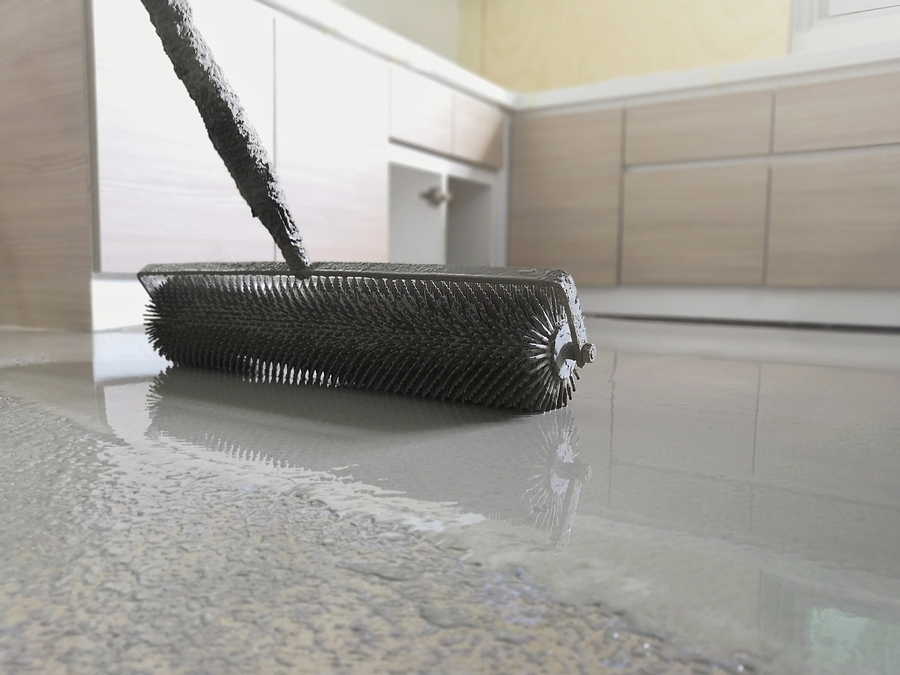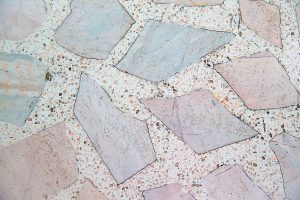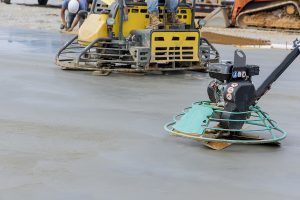If you’ve got an uneven or aging concrete floor, you might be wondering what it would take to restore it. Do you have to tear it all out and start from scratch? Thankfully, no. One of the most practical and cost-effective ways to revitalize a worn-out surface is by using self-leveling concrete. It’s a popular option among contractors and homeowners alike for smoothing out slabs, correcting minor imperfections, and prepping floors for finishes or coatings. That brings us to the big question: Can you put self-leveling concrete over existing concrete?
The answer is yes, but like most construction projects, it comes with a few caveats. Let’s take a closer look at how self-leveling concrete works, when it’s a good choice, and how it fits into broader concrete resurfacing solutions like sealers and concrete floor polishing.
What Is Self-Leveling Concrete?
Self-leveling concrete is a specially formulated cementitious compound designed to flow and settle into a smooth, flat surface with minimal effort. It has a thinner consistency than traditional concrete, which allows it to spread out evenly across an existing floor without the need for extensive troweling. Once poured, it naturally finds its level—filling in dips and low spots, correcting minor slopes, and preparing the slab for flooring or finishing.
This makes it an ideal solution for residential, commercial, and industrial spaces where a flat, durable surface is essential.
Can You Put Self-Leveling Concrete Over Existing Concrete?
Yes, you can apply self-leveling concrete directly over existing concrete, as long as the original slab is structurally sound and properly prepped. That means no major crumbling, deep cracks, or surface contaminants like oil or glue that could interfere with bonding.
Before pouring, the existing concrete must be cleaned thoroughly and roughened through grinding or etching. This helps the self-leveling compound adhere more effectively. Most applications also require a bonding primer, which acts like a glue between the old and new layers. Skipping this step can lead to peeling, flaking, or separation down the road.
So while self-leveling is an effective resurfacing method, it’s not a shortcut. The base layer still needs attention to ensure the result is stable, smooth, and built to last.
Ideal Situations for Self-Leveling Concrete
There are several scenarios where self-leveling concrete makes perfect sense. If you’re dealing with a slab that’s uneven, has dips or high spots, or needs to be leveled for new flooring, this solution is a smart and efficient fix. It’s frequently used to prep floors for tile, carpet, luxury vinyl, and even hardwood.
It also comes in handy when you want to raise a floor slightly to match other flooring transitions or create a flatter surface for functional spaces like basements, workshops, or commercial areas. For anyone planning to apply decorative finishes, such as epoxy coatings or concrete floor polishing, a level base is essential for both appearance and durability.
Can Self-Leveling Concrete Be Polished?
Not all self-leveling concrete products are created equal, especially when it comes to polishing. Standard self-leveling underlayments are designed to be covered by another floor type and aren’t formulated for exposure or shine. However, some specialized mixes are polishable. These products have finer aggregates and denser compositions that can withstand the grinding and sealing process of a true polished concrete finish.
If your goal is a sleek, polished floor, be sure to work with a contractor who understands the difference. Choosing the right product and preparation method is critical for achieving that high-gloss look that concrete floor polishing is known for.
Advantages and Considerations
One of the biggest benefits of self-leveling concrete is that it saves time and money compared to full slab replacement. It allows you to fix issues without the mess and expense of demolition. It’s also relatively quick to install—many projects can be completed in a day or two, with curing times depending on thickness and product type.
Once cured, the surface is smooth, durable, and ready for your choice of flooring or finishing. It’s ideal for both residential and commercial environments where performance and aesthetics matter.
Of course, it’s not a miracle cure for every floor. Self-leveling products are only as good as the prep work beneath them. They won’t correct major structural issues, large cracks, or movement in the slab. In those cases, other concrete resurfacing solutions or even slab replacement may be needed.
Tips for a Successful Application
For best results, proper planning and prep are everything. Start by inspecting your slab for damage, moisture issues, or old coatings that need removal. The surface should be ground to create texture and cleaned of all dust and debris. From there, applying a bonding primer helps ensure a strong, long-lasting bond between the layers.
Timing also matters. Self-leveling compounds set quickly—usually within 20 to 30 minutes—so be sure everything is ready before you mix and pour. Having an experienced team handle the process ensures smoother results and reduces the risk of errors.
While DIY installation is possible for smaller jobs, larger or decorative projects should be left to professionals, especially if the floor will serve as the finished surface or be polished.
Final Thoughts
So, can you put self-leveling concrete over existing concrete? Absolutely. It’s one of the most practical and efficient concrete resurfacing solutions for dealing with uneven, worn, or outdated slabs, without the cost and hassle of a complete replacement. When installed correctly, it creates a level, durable foundation that works well under all types of flooring and even supports more advanced finishes like concrete floor polishing.
It’s a simple concept, but when done right, self-leveling concrete can completely transform a space from a rough, patchy floor to a sleek, even surface that looks as good as it performs.
Looking to restore or upgrade your concrete floors? At Custom Concrete Prep & Polish, we specialize in expert surface preparation, self-leveling underlayments, and professional concrete floor polishing. Whether you’re refinishing a basement, leveling a warehouse, or upgrading a showroom, our team can guide you to the right solution.
Contact us today to schedule a consultation and get your floor back on level ground.



